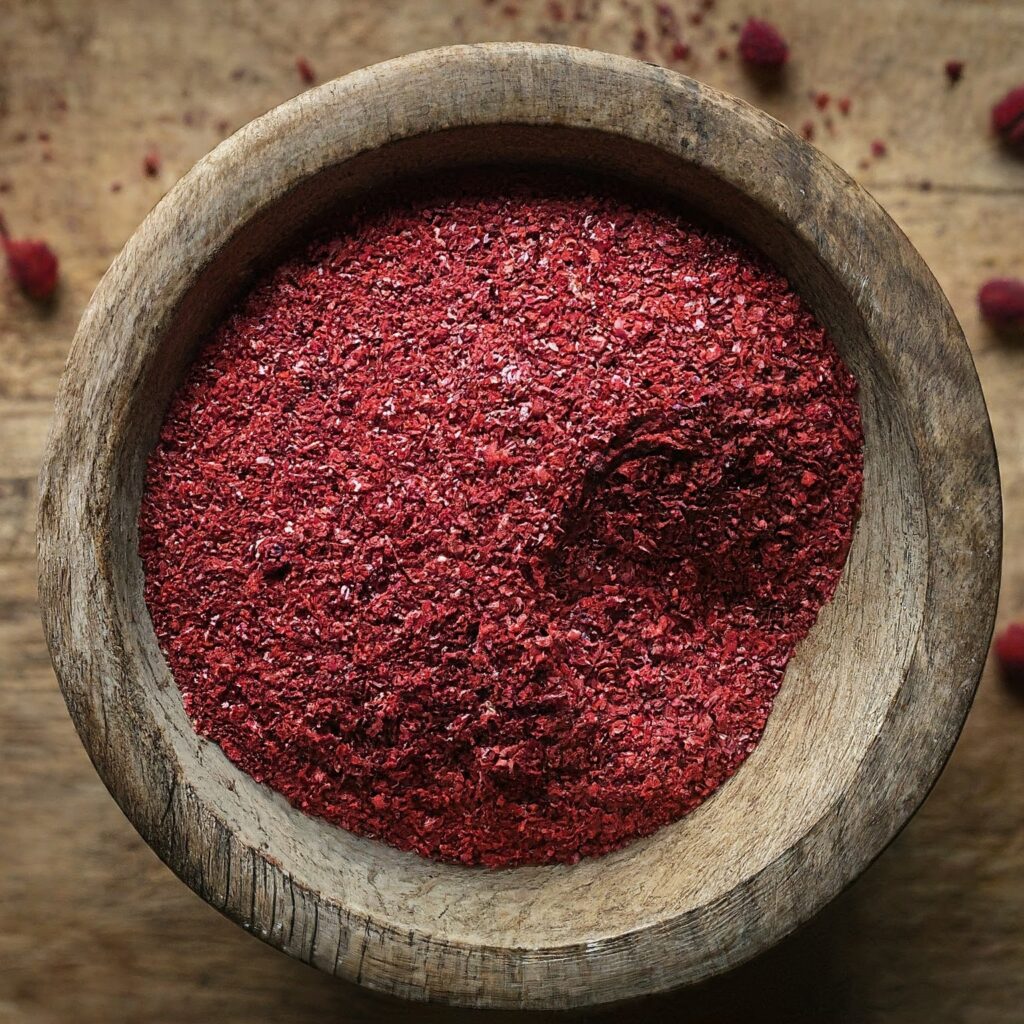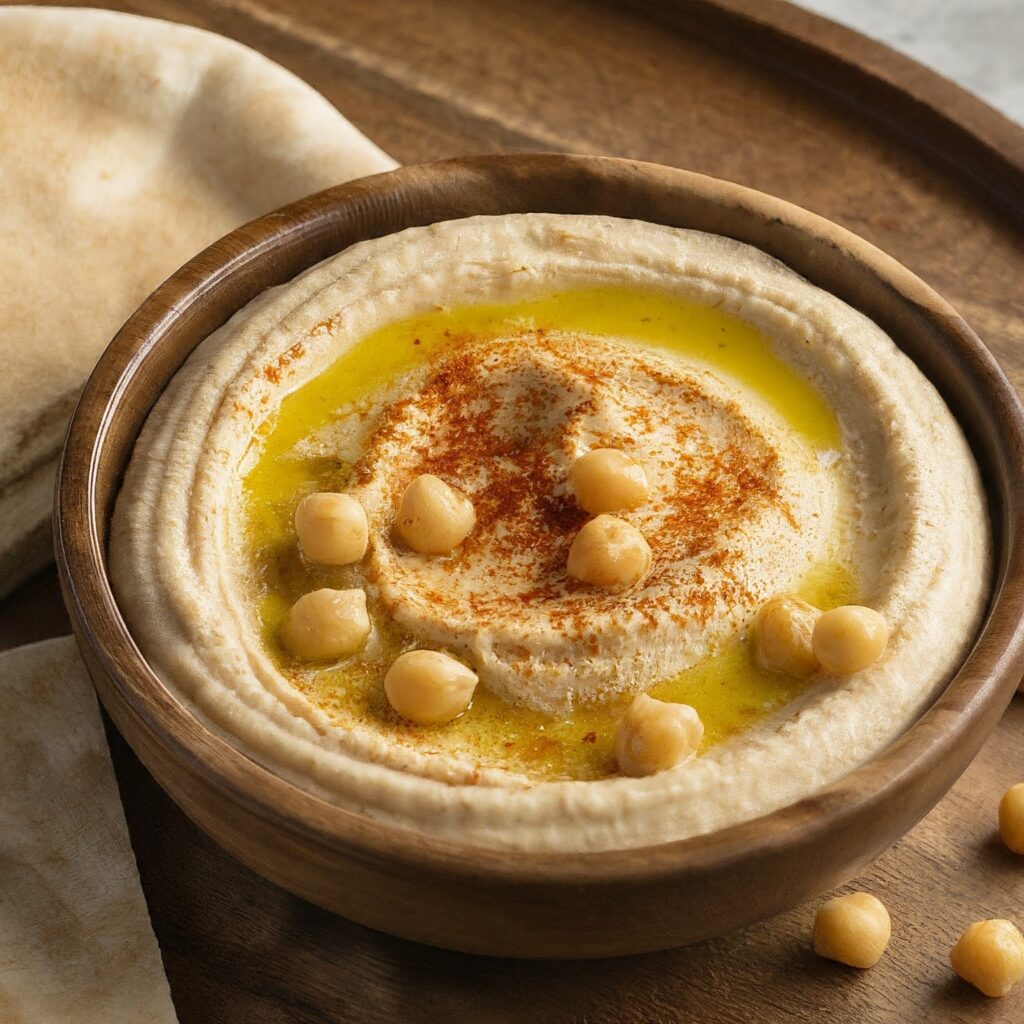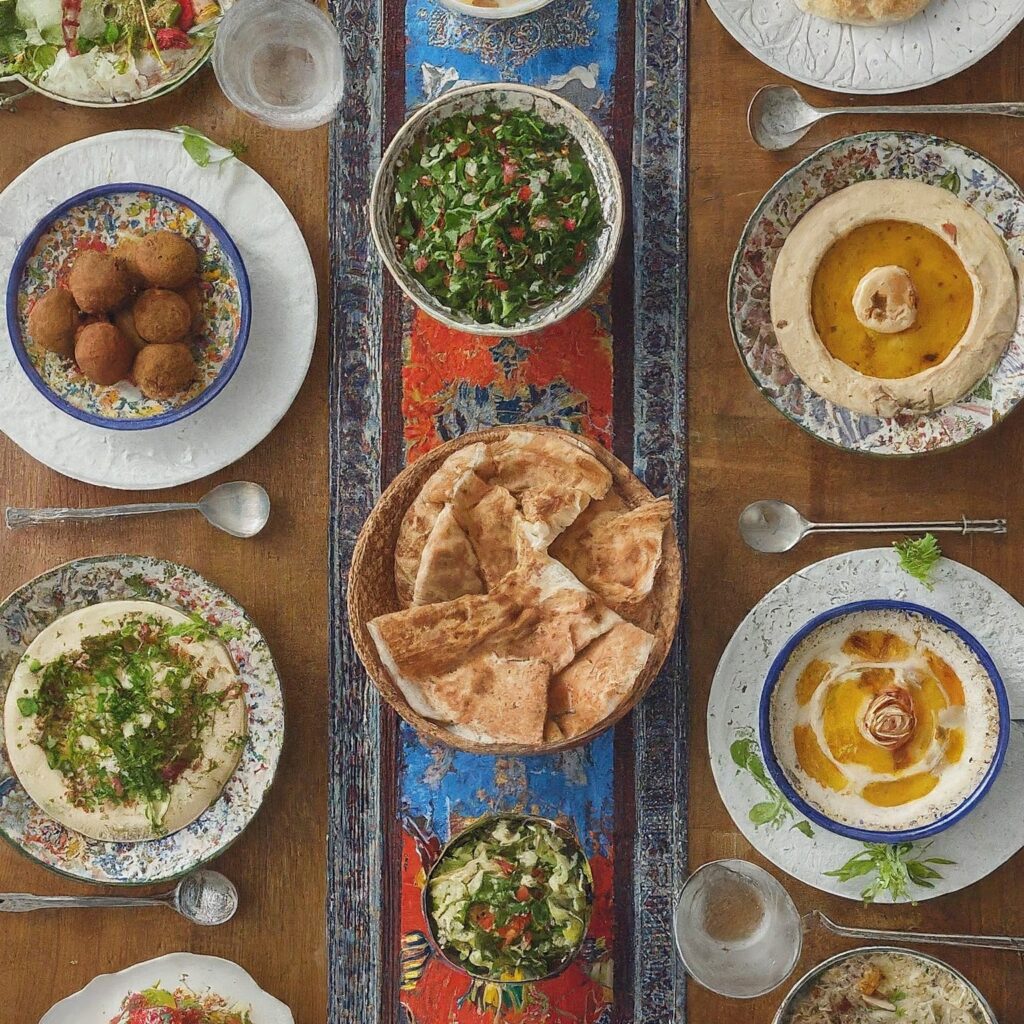Introduction to Middle Eastern Cuisine
Middle Eastern cuisine is a tapestry of rich flavors, vibrant colors, and aromatic spices that reflect the region’s diverse cultures and histories. Spanning countries like Lebanon, Turkey, Iran, and beyond, Middle Eastern food is celebrated for its use of fresh ingredients, bold spices, and ancient culinary traditions.

Key Ingredients and Spices

- Herbs and Spices:
- Sumac: Adds a tart, citrusy flavor to dishes.
- Za’atar: A blend of herbs like thyme, oregano, sesame seeds, and sumac.
- Cumin: Provides earthy, warm tones to many dishes.
- Coriander: Offers a fresh, citrusy flavor to meats and stews.
- Pomegranate Molasses: Adds a tangy sweetness to marinades and dressings.
- Staple Ingredients:
- Chickpeas: Used in hummus, falafel, and salads.
- Bulgar Wheat: A common grain used in salads like tabbouleh.
- Pita Bread: Served alongside many dishes for dipping and wrapping.
Popular Middle Eastern Dishes
- Hummus: A creamy dip made from chickpeas, tahini, lemon juice, and garlic.

- Falafel: Deep-fried balls made from ground chickpeas or fava beans, served in pita bread.

- Shawarma: Marinated meat (typically lamb, chicken, or beef) cooked on a vertical rotisserie and served in wraps.

- Tabbouleh: A refreshing salad made from bulgur wheat, parsley, tomatoes, and mint, dressed with lemon juice and olive oil.

- Kebabs: Skewers of grilled meat or vegetables, often seasoned with a variety of spices.
Tips for Cooking Middle Eastern Food at Home

- Use Fresh Ingredients: Opt for fresh herbs, spices, and produce to enhance flavors.
- Master the Spice Blends: Experiment with za’atar, baharat, and ras el hanout to create authentic flavors.
- Slow Cooking: Many Middle Eastern dishes benefit from slow cooking to develop deep flavors.
- Balance Sweet and Savory: Incorporate pomegranate molasses or dried fruits to balance flavors.
- Serve with Accompaniments: Offer sides like yogurt, pickles, and fresh herbs to complement dishes.
Cultural Significance of Middle Eastern Cuisine
Middle Eastern cuisine is more than just food; it’s a reflection of hospitality, tradition, and community. Meals are often shared family-style, emphasizing generosity and connection. Cooking techniques have been passed down through generations, preserving cultural identity and heritage. Ingredients are often sourced locally, highlighting the region’s agricultural abundance and culinary diversity.

Explore the rich flavors and cultural significance of Middle Eastern cuisine in your own kitchen. Whether you’re preparing a hearty stew, flavorful kebabs, or indulging in creamy hummus, each dish offers a taste of the vibrant traditions that have shaped this celebrated culinary landscape.
